- What is piriformis muscle pain?
- Where is piriformis muscle located in the body?
- What does piriformis muscle pain feel like?
- Why does my piriformis muscle hurt?
- What is piriformis syndrome?
- Where do you feel pain with piriformis syndrome?
- How to know if you have piriformis syndrome?
- How long does piriformis muscle pain last?
- How long does piriformis muscle take to heal?
- Will piriformis heal on its own?
- Does piriformis cause muscle spasms?
- How should I sleep with piriformis muscle pain?
- Why does sitting hurt piriformis?
- Are piriformis and sciatica the same?
- Can the piriformis muscle cause sciatica pain?
- Can the piriformis muscle cause hip pain?
- Can the piriformis muscle cause groin pain?
- Can the piriformis muscle cause knee pain?
- Can piriformis muscle cause pelvic pain?
- Can a tight piriformis muscle cause lower back pain?
What is piriformis muscle pain?
The piriformis muscle is located in the buttocks, and its main function is to rotate the hip. However, this muscle can sometimes become irritated or inflamed, causing pain that radiates into the buttock and down the leg. This condition is known as piriformis syndrome, and it can be extremely painful and debilitating. Treatment typically involves stretching and strengthening exercises, as well as massage and/or acupuncture. In some cases, surgery may be necessary to release the piriformis muscle. Piriformis muscle pain can be a frustrating and debilitating condition, but with treatment, most people are able to find relief.
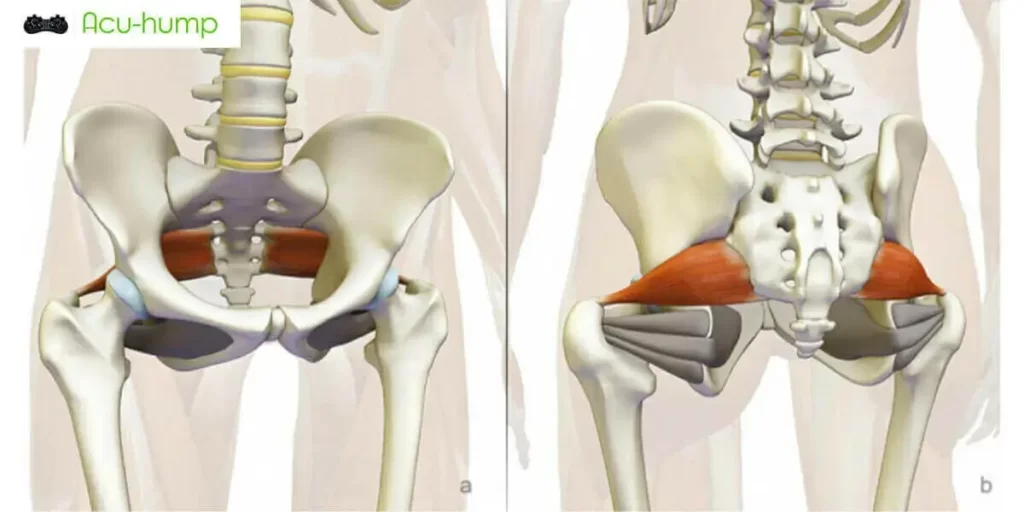
Where is piriformis muscle located in the body?
The piriformis muscle is a small muscle located in the buttocks. It originates from the lower sacral spine and inserts into the greater trochanter of the femur. The muscle functions to laterally rotate the hip and stabilize the hip joint. It is also an important muscle for walking, as it helps to maintain balance and keep the hips level. Additionally, the piriformis muscle helps to stabilize the pelvis when standing on one leg. For example, when you stand on your right leg, your left piriformis muscle contracts to keep your pelvis level. The piriformis muscle can become tight or inflamed due to overuse or activity. This can lead to pain and discomfort in the buttocks and hips. Stretching and massage are two effective treatments for piriformis syndrome.
What does piriformis muscle pain feel like?
Piriformis syndrome is a condition in which the piriformis muscle becomes tight or spasms, causing pain in the buttock and hip. The pain may radiate down the leg, and is often worse when sitting or walking. Piriformis syndrome is often caused by overuse or injury to the muscle, but can also be caused by a buildup of scar tissue. Treatment for piriformis syndrome typically includes stretching and massage with the Acu-hump (a sciatica stretching tool), as well as ice and heat therapy. In severe cases, surgery may be necessary to release the muscle.

Why does my piriformis muscle hurt?
The piriformis muscle can become tight and irritated, causing pain in the hip and buttock. This condition is known as piriformis syndrome, and it is often caused by overuse or injury. Piriformis syndrome is characterized by pain and tenderness in the buttocks, shooting pain down the leg, and difficulty moving the leg.
Piriformis pain can be caused by a variety of movements and overuse behaviors. Some of the most common include:
- Sitting for long periods of time
- Standing for long periods of time
- Walking or running on hard surfaces
- Lifting heavy objects
- Climbing stairs
- Bending at the waist
- Twisting the body
Any of these activities can put a strain on the piriformis muscle, causing it to become irritated and inflamed. Additionally, people who have existing conditions such as arthritis or hip problems are more likely to experience pain in the piriformis muscle.
Treatment for piriformis syndrome typically includes piriformis stretch and massage to release the muscle, along with ice and heat therapy to reduce inflammation. In severe cases, surgery may be necessary to release the muscle.

Acu-hump®
Release Hip & Butt
What is piriformis syndrome?
Piriformis syndrome is a condition that occurs when the piriformis muscle, which is located in the buttocks, irritates the sciatic nerve. The sciatic nerve is the longest nerve in the body, and it runs from the lower back all the way down to the feet. Piriformis syndrome can cause pain, numbness, and tingling in the lower back, buttocks, and legs. The condition is often aggravated by sitting for long periods of time, and it is frequently seen in athletes who run or do other high-impact activities. Piriformis syndrome can be treated with stretching exercises, physical therapy, and massage. In some cases, surgery may be necessary to release the piriformis muscle from the sciatic nerve.
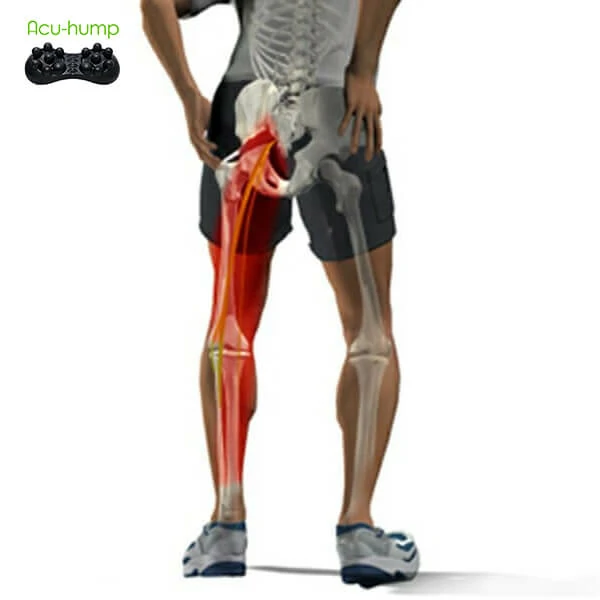
Where do you feel pain with piriformis syndrome?
Piriformis syndrome is a condition in which the piriformis muscle, which is located in the buttocks, irritates the sciatic nerve. The piriformis syndrome signs and symptoms include pain in the buttocks, numbness or tingling in the legs, and pain that worsens when sitting or lying down. The condition is often caused by an injury or overuse of the muscle, but it can also be caused by a buildup of scar tissue. Treatment for piriformis syndrome typically includes rest, ice, and physical therapy. In severe cases, surgery may be necessary to relieve pressure on the sciatic nerve.
How to know if you have piriformis syndrome?
Piriformis syndrome is a condition that occurs when the piriformis muscle, which is located in the buttocks, becomes tight or spasms. This can happen for a variety of reasons, including sitting for long periods of time or having an injury to the area. When the muscle becomes tight, it can compress the sciatic nerve, which runs from the lower back down the legs. This can cause pain, numbness, or tingling in the legs and buttocks. It can also make it difficult to move the legs or walk. If you think you might have piriformis syndrome, it’s important to see a doctor so they can rule out other potential causes of your symptoms and develop a piriformis syndrome treatment plan. There are a few things you can do at home to help relieve your symptoms, such as stretching and massaging the area, but it’s important to see a doctor to get an accurate diagnosis and treatment plan.

How long does piriformis muscle pain last?
The duration of piriformis muscle pain can vary from person to person depending on various factors. In general, the pain caused by piriformis muscle issues can range from a few days to several weeks or even months. Mild cases of piriformis muscle pain may resolve on their own within a week or two with conservative measures such as rest, heat or ice, and gentle stretching. However, more severe or chronic cases may require longer periods of treatment and rehabilitation, sometimes lasting several months or more. Long-term management strategies, including strengthening exercises, postural corrections, and lifestyle modifications, may be recommended to prevent future episodes of piriformis muscle pain.

Acu-hump: 30-day return policy.
You have no risk.
How long does piriformis muscle take to heal?
The good news is that piriformis muscle injuries typically heal within a few weeks with rest, ice, and stretching. However, if the pain persists or worsens, it is important to see a doctor for treatment. untreated injuries can lead to chronic pain and may even require surgery. Therefore, it is important to seek medical attention if you think you have injured your piriformis muscle.
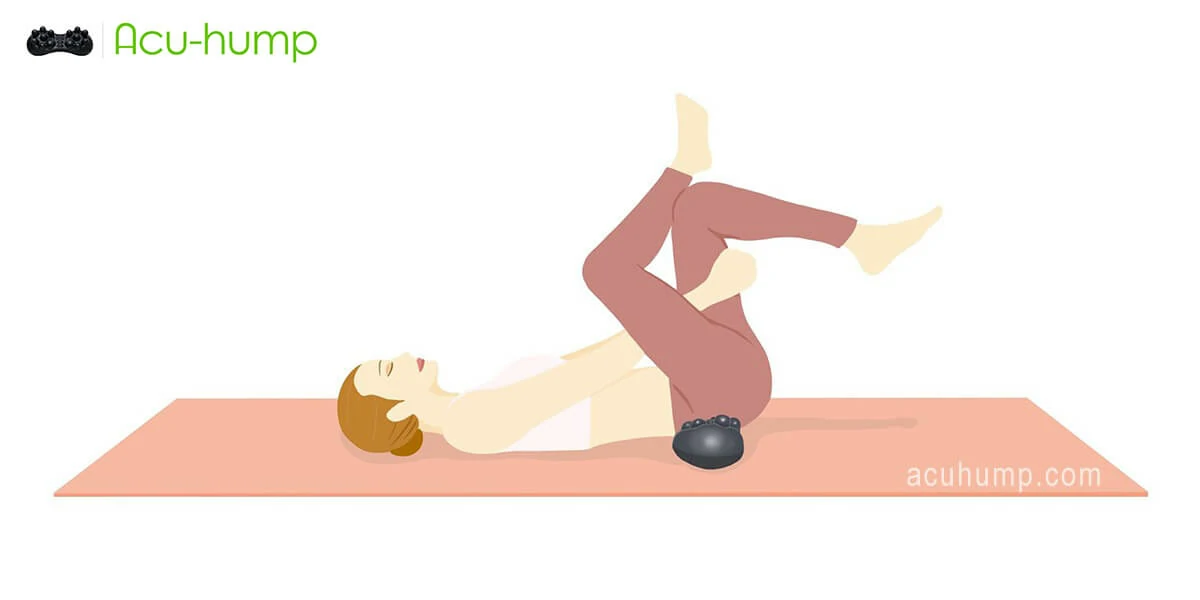
Will piriformis heal on its own?
No, it does not heal on its own. But the good news is that piriformis syndrome can be treated successfully with a variety of conservative measures, including stretching exercises, massage, and ice therapy. Patients also use an Acu-hump to stretch and massage their buttock for sciatica nerve at home. The Acu-hump doesn’t roll like a yoga roller, it sits smoothly under your body. And larger than the pressure point nubs of a yoga roller, they can penetrate deep tissue. In most cases, the condition will improve with time and does not require surgery. However, if pain persists for more than six weeks or if there is significant weakness or numbness in the leg, it is important to see a doctor for further evaluation.

Does piriformis cause muscle spasms?
Muscle spasm is a sudden, involuntary contraction of a muscle or group of muscles. It can be painful and debilitating, and often occurs without warning.There is no definitive answer to this question as everyone experiences muscle spasms differently. However, some people do report that their piriformis muscle becomes tight and causes spasms. Generally, these spasms are not severe and can be treated with simple self-care measures such as stretching and massage. If the spasms are severe or persistent, however, it is important to seek medical attention as there may be a more serious underlying condition causing the spasms.

Acu-hump®
Release Butt & Lower Back
How should I sleep with piriformis muscle pain?
If you’re dealing with piriformis muscle pain, you might be wondering how to sleep comfortably. You need to:
- Sleep on a firm mattress
- Massage and stretch the piriformis muscle before bed
The first step is to find a mattress that provides adequate support. A firm mattress will help to prevent your hips from sinking too deeply into the bed, which can aggravate piriformis muscle pain. You may also want to consider placing a pillow between your knees to keep your hips aligned. Sleeping on your side with a pillow under your top leg can also help to ease piriformis muscle pain.
Daily massage and stretching of the piriformis muscle will help relieve piriformis pain and help with sleep. If you find that you’re still struggling with discomfort, you may want to consult with a physical therapist or other healthcare providers for additional tips on how to sleep comfortably with piriformis muscle pain.
Why does sitting hurt piriformis?
When you sit, you put pressure on the piriformis muscle. This muscle is located in the buttock region and helps to rotate the thigh outward. For some people, this can cause the muscle to become irritated or inflamed, resulting in pain. Additionally, sitting for long periods of time can cause the piriformis muscle to tighten, leading to further discomfort. If you experience pain when sitting, it may be beneficial to try to avoid sitting for extended periods of time. Additionally, stretching and massaging the muscle can help to relieve tension and promote healing.

Are piriformis and sciatica the same?
Pains in the buttocks and lower back can be caused by a number of different conditions, ranging from muscular strains to herniated discs. However, one of the most common causes is a condition known as sciatica. Sciatica is characterized by pain that radiates along the sciatic nerve, which runs from the lower back down through the buttocks and legs. In some cases, the pain may be caused by a herniated disc or other spinal condition. However, in many cases, the cause is a muscle known as the piriformis. The piriformis is a small muscle located deep within the buttocks. This muscle helps to stabilize the hip joint and allows for smooth movement of the leg. When the piriformis muscle becomes tight or irritates the sciatic nerve, it can cause pain that radiates down through the buttocks and legs. In some cases, this pain may be severe enough to sideline even the most active individuals. Piriformis syndrome and sciatica are often used interchangeably, but they are actually two distinct conditions. While both can cause pain in the buttocks and lower back, only sciatica refers to pain that radiates along the sciatic nerve. Piriformis syndrome is caused by an irritation of the piriformis muscle itself, while sciatica can be caused by a number of different conditions. Treatment for each condition will vary depending on the underlying cause. However, both piriformis syndrome and sciatica can often be effectively treated with stretches and exercises that target the affected muscles. In some cases, medication or injections may also be necessary to help relieve pain and restore normal function.

Can the piriformis muscle cause sciatica pain?
Sciatica is a pain that radiates from the lower back down the sciatic nerve, which runs from the lower spine through the buttocks and down the legs. The piriformis muscle is a small muscle located deep in the buttocks that help to rotate the hip. The sciatic nerve runs right through the piriformis muscle, and when this muscle becomes tight or irritated, it can compress and pinch the sciatic nerve, causing sciatica pain. Piriformis syndrome is a condition in which the piriformis muscle causes sciatica pain. This condition is often treated with massage and stretching to relieve muscle tension, as well as with chiropractic adjustments or physical therapy to improve mobility and reduce inflammation. If you are experiencing sciatica pain, talk to your doctor to see if piriformis syndrome may be the cause.
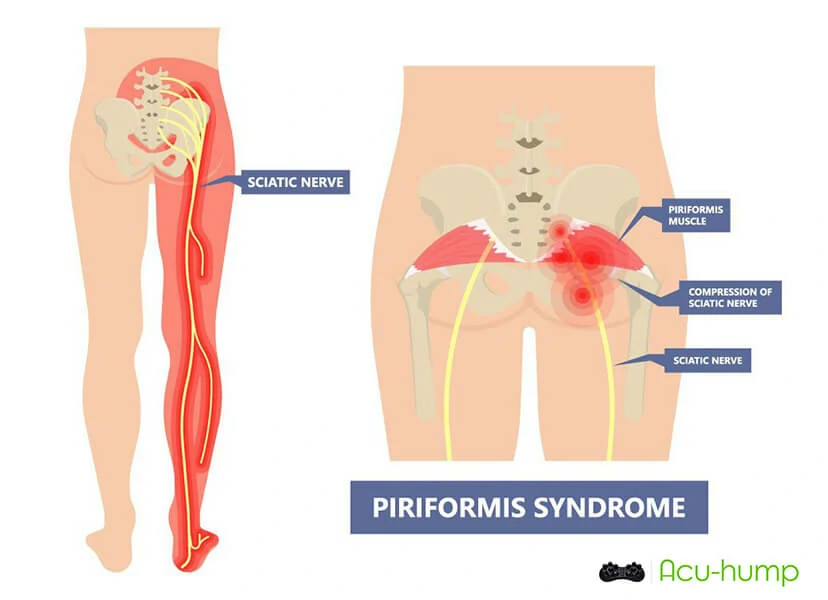
Can the piriformis muscle cause hip pain?
The piriformis muscle is a small, pear-shaped muscle located in the buttock. It attaches the lower spine to the upper leg and helps stabilize the hip joint. The piriformis muscle can become tight or inflamed, causing pain and discomfort in the hip and buttocks. In some cases, the pain may radiate down the leg. Piriformis syndrome is a condition that occurs when the piriformis muscle irritates or compress the sciatic nerve, which runs from the lower spine to the feet. This can cause pain, numbness, or tingling in the hip and leg. Treatment for piriformis syndrome typically includes stretching exercises, massage therapy, and physical therapy. You can try the Acu-hump, which allows for stretch exercises while massaging. In severe cases, surgery may be necessary to release the sciatic nerve from compression.

Acu-hump: 30-day return policy.
You have no risk.
Can the piriformis muscle cause groin pain?
Groin pain is a common problem that can have a number of different causes. One potential cause is the piriformis muscle. This muscle is located in the hip area and helps to stabilize the hip joint. However, if the piriformis muscle becomes tight or irritated, it can cause pain in the groin area. In addition, the piriformis muscle can also put pressure on the sciatic nerve, which can cause radiating pain down the leg. Treatment for piriformis-related groin pain typically involves stretches and exercises to loosen the muscle and relieve pressure on the sciatic nerve. In some cases, massage therapy or physical therapy may also be recommended. If you are experiencing groin pain, it is important to see a doctor to determine the cause and get appropriate treatment.
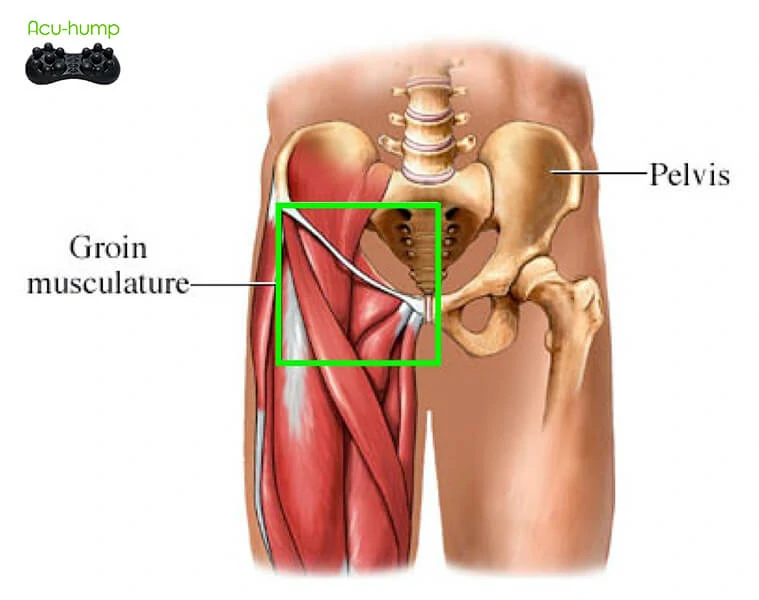
Can the piriformis muscle cause knee pain?
Knee pain is a very common problem that can have many different causes. One possible cause of knee pain is the piriformis muscle. The piriformis muscle is a small muscle located in the buttocks. It helps to rotate the hip and leg outwards. The Piriformis muscle can become tight or inflamed, which can put pressure on the sciatic nerve. This can cause pain, numbness, or tingling in the leg and knee. If you are experiencing knee pain, it is important to see a doctor to determine the cause. Depending on the cause of the knee pain, there are many different treatment options available.
Can piriformis muscle cause pelvic pain?
There are many muscles in the pelvic region that can contribute to pelvic pain. One of these is the piriformis muscle. The piriformis muscle is a small, pear-shaped muscle that is located deep within the buttocks. It attaches the pelvis to the femur, or thighbone. The main function of the piriformis muscle is to stabilize the hip joint and enable free movement of the leg. However, when this muscle becomes tight or irritated, it can compress the sciatic nerve and cause pelvic pain. Piriformis syndrome is a condition that occurs when the piriformis muscle compresses the sciatic nerve. This can cause pain in the lower back, buttocks, and legs. Treatment for piriformis syndrome often includes stretching and massage exercises, as well as physical therapy. In severe cases, surgery may be necessary to release the muscle knots and relieve pressure on the sciatic nerve.
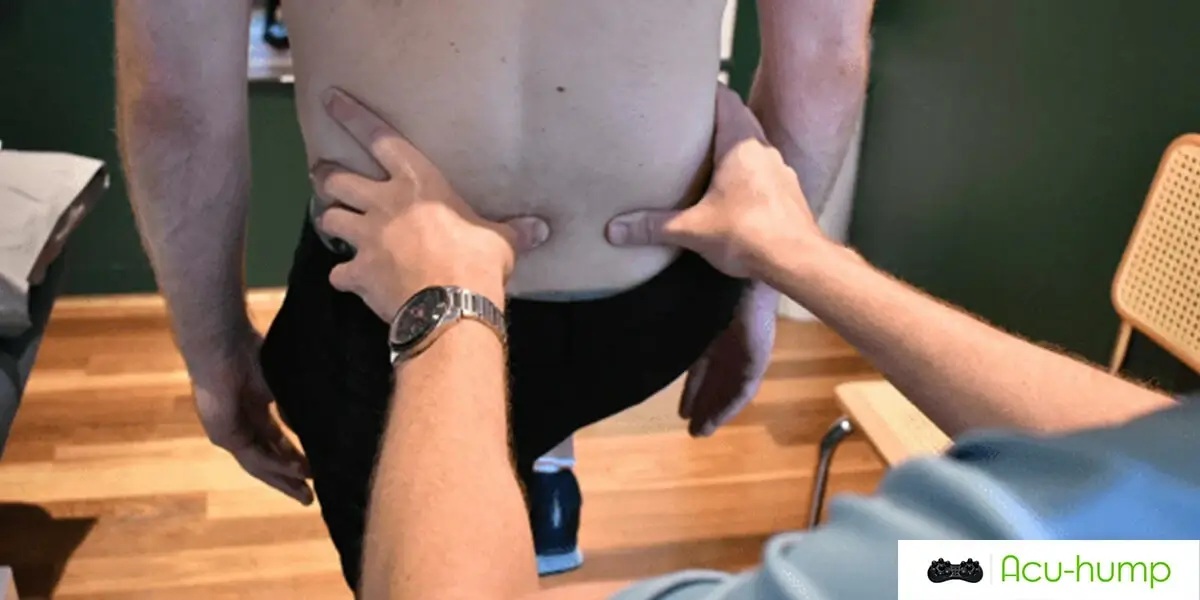
Can a tight piriformis muscle cause lower back pain?
Lower back pain is a common affliction that can be caused by a variety of factors. One possible cause of back pain is a tight piriformis muscle.
While the piriformis muscle is a small muscle located deep in the hip, it helps to rotate the hip and stabilize the joint. It can cause big problems if it becomes tight or inflamed. When this muscle becomes tight or inflamed, it can put pressure on the sciatic nerve, which runs from the lower back down to the legs, causing lower back pain to radiate down the leg. Additionally, the piriformis muscle can also cause back pain by putting pressure on the spine. Therefore, if you are experiencing back pain, it is worth checking to see if your piriformis muscle is tight.
Additionally, tightness in the piriformis muscle can also lead to difficulty moving the leg or hip, and cause problems with walking and sitting. In some cases, the only way to relieve this type of pain is through stretches and massage. However, if the pain persists, it is important to see a doctor so they can properly diagnose and treat your condition.

Acu-hump®
Release Butt & Lower Back
